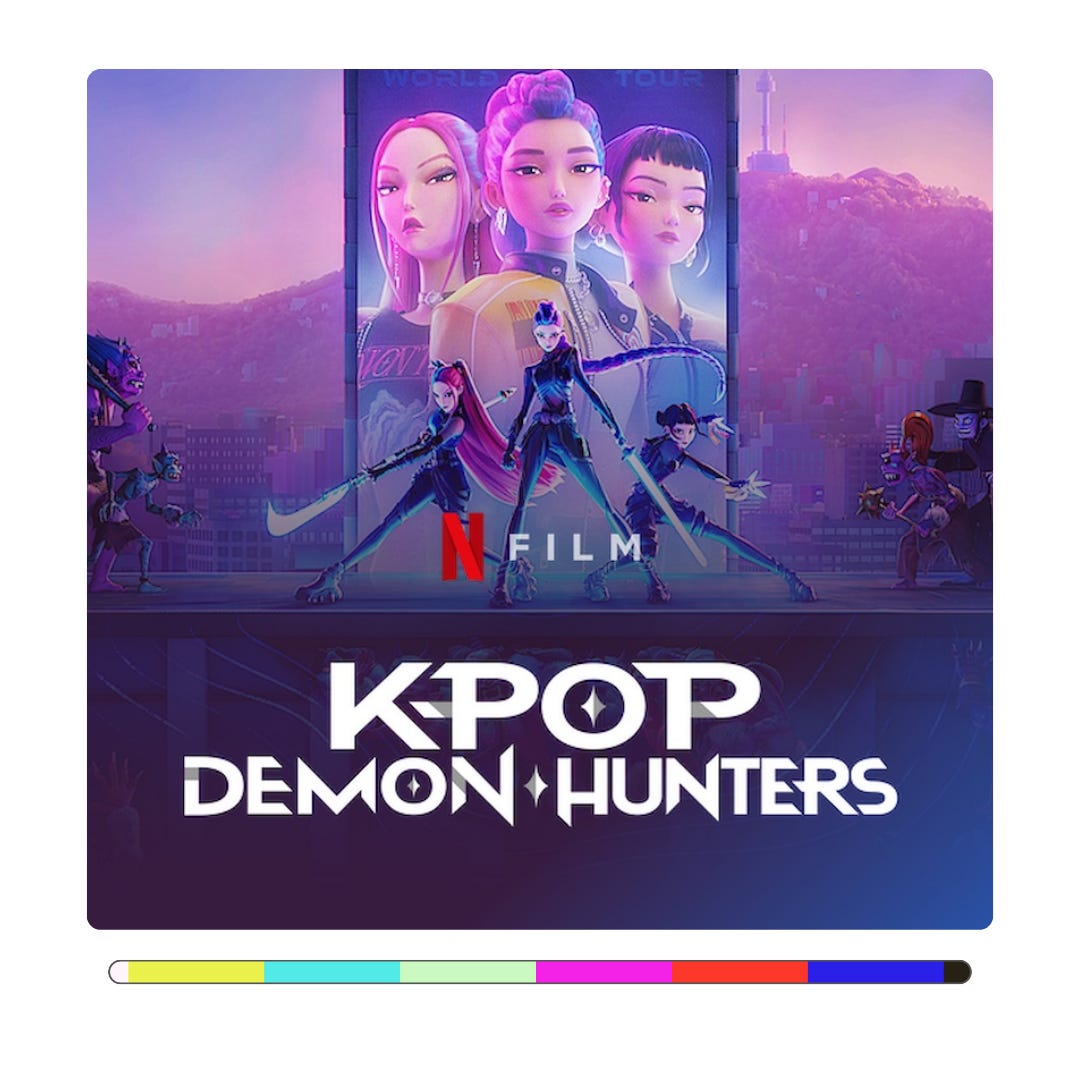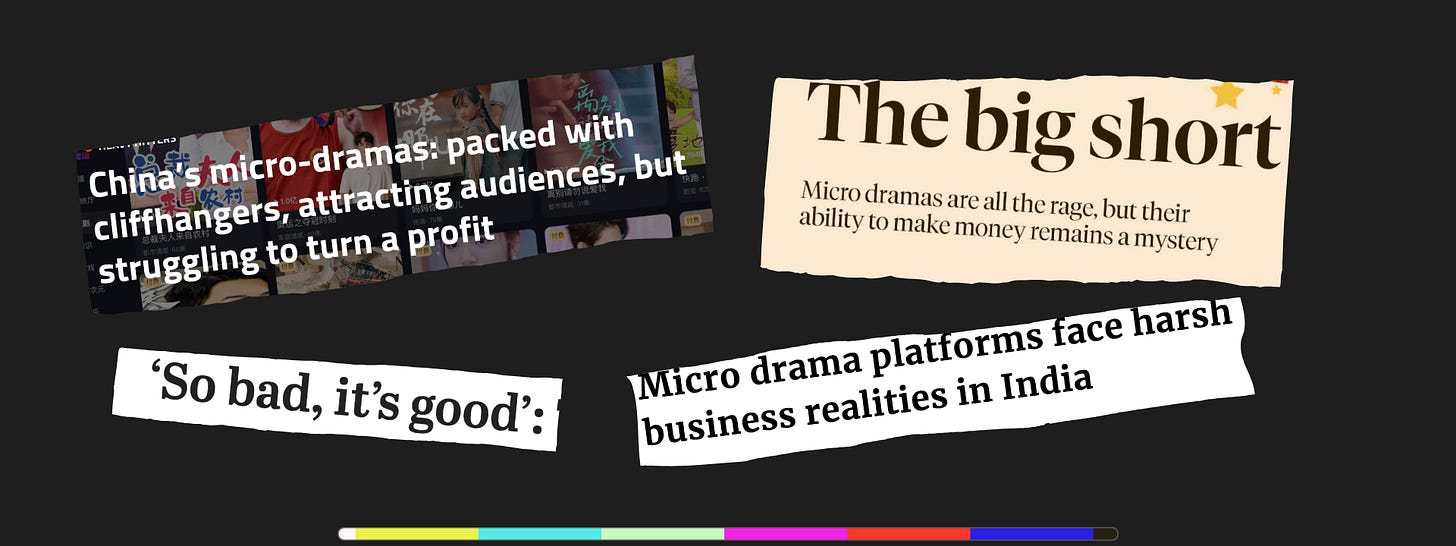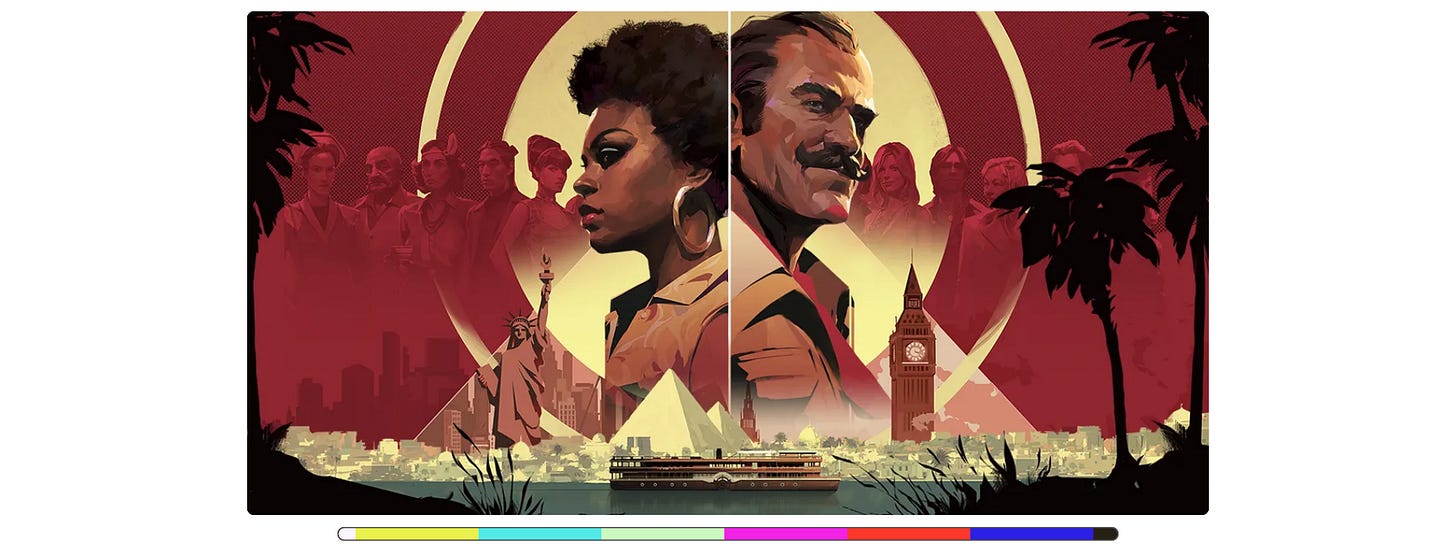Microdoses
Micro drama state of play · Multiverse of books · Demons & divas · Happy endings ·
🎧 Prefer to listen? Hit play above to listen to me read this week’s dispatch.
The buzz around micro dramas continues unabated. With growth in markets outside China, increased distribution across Asia, and India coming to the party, you can be forgiven for taking a pause every time you see this new genre showered with excitement. I wrote about the format itself early this year, and today I look at the state of play but also the questions that continue to float around, unloved.
That piece anchors the newsletter this week, so you can jump right ahead if that’s what you want first. Or, you can sample some ▶️ Curated/Cuts to start off, where Amazon powerfully brings books to life, hardcore runners run with community love, and yes- that Gwyneth Paltrow response to the Coldplay-CEO drama.
I also touch on some Kpop demons devouring both film and music charts, and an AI-assisted reimagining of a hit movie in India.
➕ Plus: quick looks at a unique Mastercard campaign in Poland, 70s retro-chic Agatha Christie, an NFDC-Amazon Prime Video partnership, F1 vs Caitlin Clark and McDonalds vs McPatel!
However has all this come together this week? Because this is the Colour Bar- a collision of creativity, content, culture, tech and brands!
🎬 Curated/Cuts.
1. Multiverse of books
Books need readers. And I say, readers need books too. In this new spot, Amazon does a great job of bringing books to life, and making readers instrumental in that delight.
Intersecting the worlds of events/sports/stories and their consumers is not an uncommon creative device (Amazon and Droga5 themselves have done this); the difference here is in giving the readers agency. It is not merely about being sucked into the world of the book- we readers are the ones who give the books wings.
Production · Biscuit Filmworks · Revolver · Agency: Droga5 ·
Directed by Steve Rogers · Editing- Work Editorial · DOP Lukasz Zal · Editor Rich Orrick · Audio Post 750mph ·
2. Fly human fly
This spot from shoemaker Hoka brings a real, emotional, earnest feel to runners and the community that powers them.
Together we fly. by Anomaly · Edit Final Cut US · Music Barking Owl ·
3. Thank you for your Interest
Astronomer dropped a spot featuring Gwyneth Paltrow and seemingly taking their recent Coldplay/CEO controversy and social media chaos head-on. Of course, Paltrow and Coldplay frontman Chris Martin were married for many years.
There’s plenty of commentary on this floating about, so I will just say that it is a cute, self-aware way to deal with a PR issue and try to bring the company back into focus. Arguably, Astronomer has had more publicity in the last few weeks than many, many before, so some leveraging of it is called for.
Director’s Cut (out).
Many forays into gen AI seem to be of the “lets do this because we can” variety.
A latest nugget comes from India, where a film's ending is being changed, a decade on from its initial release. Raanjhanaa, a romantic film with a tragic ending, is being re-released next month by Eros, but this time with a ‘happy ending’. That ending has been crafted with the help of generative AI.
Except, the director of the film Anand Rai had no part to play in it, and wasn’t even asked. Of course- this has led to a bit of a furore amidst questions of creative and narrative integrity. What this meaningfully also is, is a conversation around the legal frameworks- which clearly need some rapid catching up.
Like much with the tussles between AI and creative spaces, I feel we could see corporates widely over-lean into AI, before trying to correct and bring back the sanctity of artistic vision.
In this case, the studio might well be legally entitled to what it is doing. But is it a step in reducing a director or the owner of a creative vision, to merely someone who creates a draft? A ‘first cut’ that AI can hone or even radically transform?
When it comes to artistic intent (and surely we must agree that cinema has a high degree of this, irrespective of how commercial it can be), we ought to pause before doing something just because technology now lets us.
K-Pop's Demons
If you have not yet heard of K-Pop Demon Hunters, it is an animated musical fantasy film from Sony, released on Netflix last month. Now, the wildly popular title has become the most-watched original animated film in Netflix history.
Beyond Netflix charts, it's killing the music lists too- the track ‘Golden’ climbed to #1 on both U.S. and global Spotify charts; the soundtrack debuted at No. 1 on Billboard’s Soundtracks chart and No. 8 on the all-genre Billboard 200.
What’s it all about, you say? The film is about Huntr/x, a K-pop girl group who lead double lives as demon hunters. The members of their rival boy band are secretly demons. Stans and supernatural action- boom!
Here is a piece that looks at just why it resonated so much. Spoiler: because it is true to the fandom.
…and so to the big piece about a tiny thing:
Don’t stop scrolling: Micros
I wrote about micro dramas early this year, and I got plenty of engagement on it, as did my very brief video during this year’s APOS summit in June. I’ve seen how there is a lot of curiosity around it, either from excitement or the unfamiliar.
I won’t rehash the explainer, but a quick refresher: these are mobile-first series, often 50–100 episodes of 90sec-120sec, max 3 minutes each. Emerged with a freemium model in China-early episodes free, rest paywalled- then spread across Asia and the US.
They’ve been called ‘the future of storytelling’, ‘soap operas on steroids’ and- this I received first hand- “If long form is like marijuana, micro dramas are like meth, man.” A line the Big Lebowski would vibe with.
Many view it as natural progression of a social-media dominated lifestyle. Mark Francis of Indonesia’s Vidio said on the APOS summit stage they “seem like an extension of social media, rather than a reduction of long form.”
The truth probably sits somewhere in between; they pull in the tropes of daily soaps, and the dopamine triggers of TikToks and Reels.
The buzz is on.
Across Asia, the momentum is hard to ignore. Local series are taking shape, even as more Chinese titles are distributed. The latter is led by one of the fastest movers in the space— AR Asia, which works with telcos like Telkomsel and Celcom in Indonesia and Malaysia, to both license content and host apps like FlexTV and Playlet. In Singapore, state broadcaster Mediacorp launched its first Chinese micro drama earlier this year.
South Korea— with its sluggish film & TV sector— has taken up the baton too; besides players like Top Reel and Shortcha, studios are testing waters. At APOS, KT Studios spoke of using micro dramas as an incubation space; a studio-first approach, where short-form success can seed long-form ideas.
India, unsurprisingly, is suddenly brimming with activity too. Amazon’s MX Player is rolling out the delightfully named service ‘MX Fatafat’ later this year. There’s no shortage of others- Flick TV, Kuku TV, Pocket Films, and others, all jumping right in.
“I don’t believe there will be a Netflix of micro dramas.”
Show me the.. signs of money?
Whichever market you look at, the hopeful path to profitability rests on a few pillars:
Lean production- a central tenet of the format.
Robust marketing- crucial in a hyper-crowded battle for attention.
Hybrid monetisation: freemium, subscriptions, in-stream ads, product placement.
In China, micropayments unlocked early success. Low barriers work: users drop tiny sums episode by episode without the friction of full subscriptions. Over time, subscriptions do become the end goal, often around $2/month.
In Korea, that number has leapfrogged. “The average weekly subscription is about $20, while monthly is about $40,” said Professor Kenneth Kim of Hanyang University.
ReelShort in the US follows a similar ‘coin’-based model, DramaBox has gained traction in SEA, the US. Still, business certainty is hard to come by.
Chris Jung, CEO of KT Studio Genie, was blunt. “If someone asked me about micro revenue next year, my answer is: I don’t know.”
At APOS, the panel acknowledged that apps outside China don’t enjoy the same built-in audiences that Chinese super apps offer. “Build a community on TikTok and drive traffic to your app,” they said.
Sounds logical. Also sounds like a very heavy lift.
India offers scale, but no easy answers. As Vanita Kohli noted, echoed in Best Media, AVOD models remain shaky. “For all the buzz micro drama platforms have generated… there’s a glaring reality check waiting for them.”
So how can these make money? Arguably, the answers remain as tantalisingly out of view as the cliffhangers micro dramas thrive on.
Brands Are Watching.
Brands are jumping onto the bandwagon push-cart.
KFC & McDonald’s in China both latched on to reincarnation stories. One reimagined an empress reincarnated as a micro drama actress, while the the other was filmed entirely in a McDonald’s kitchen. Singapore’s Falling for CEO’s Son, features the credit card ‘Yuu’ liberally. Most examples are from China, but there’s chatter in Southeast Asia as well (that link comes with a cliche alert!)
Beyond integrating into existing series, some brands are crafting their own little morsels of drama. But, I humbly submit— dropping 1–4 serialised clips on Instagram or TikTok does not a “micro drama” make. Those platforms offer no flow or continuity for the narrative. In this context, social media is for discovery; the real micro drama experience and engagement comes on dedicated apps, or within streaming services.
Character arcs are out. Cliffhangers are in.
And so?
What’s the endgame here? Zhou Yuan, Founder & CEO of Content Republic, put it plainly in that late-afternoon APOS panel, “I don’t believe there will be a Netflix of micro dramas. It will be the three big guys—Meta, YouTube, and TikTok. We will be vertical production studios.”
Lalit Kumar was similarly clear-eyed on India, “The buzz is undeniable, but in the absence of a deep library, a wide subscriber base, and clarity on monetisation, micro dramas might remain a cute experiment for standalone players and a scale play for the big boys.”
If someone asked me about micro revenue next year, my answer is: don’t know.
And the part most prefer to skirt around?
Creative quality. In here, low-cost is a high-priority. Quick & easy beats deep & dramatic; character arcs give way to moments; looks are often hyperreal, or basic.
Such frameworks ensure these cheap productions are accused of forgettable writing, recycled tropes, stilted performances. In fact, sometimes these are openly accepted as part of the package. AI, primed to supercharge the genre, could help speed up scripting, dubbing, vfx, but is no magic wand. Of course, much of the criticism may itself be labelled creative snobbery, from commentators predisposed to premium content.
Me? Widely described as “stories easy to digest and enjoy”, I find them hard to watch- neither easy nor enjoyable. But that’s just me and my aesthetics- not a comment on the ecosystem, nor those who are building it.
Maybe, all these questions are like the cliffhangers, and the answers just out of reach for now. But the question I have- do you watch micro dramas? Do you think they have a meaningful future? Chime in, I’d love to hear if you do.
➕
Agatha Christie’s Death On The Nile in 70s European retro chic? Ok, sure, here you go, with a video game that does just that and some striking artwork. (The trailer is less, erm, whelming)
A campaign from Mastercard in Poland that looks to bring citizen participation to the forefront.
Formula 1 is doing well in the US, but do Caitlin Clark and the WNBA still do better?
takes a look.In India, the National Film Development Corporation marks its 50th anniversary, and is looking at a digital transformation drive. Historically associated with ‘parallel’ cinema and institutional support, it also has a vast library. “NFDC has entered into an agreement with Amazon to make its extensive film library available on the streaming platform (with) the launch of NFDC’s “Cinemas of India” as an add-on channel to Prime Video”
McPatel vs McDonald. Yes, its a thing. The Patel sued the Donald, alleging it is issuing “groundless threats” to stop using ‘Mc’ in its name.










